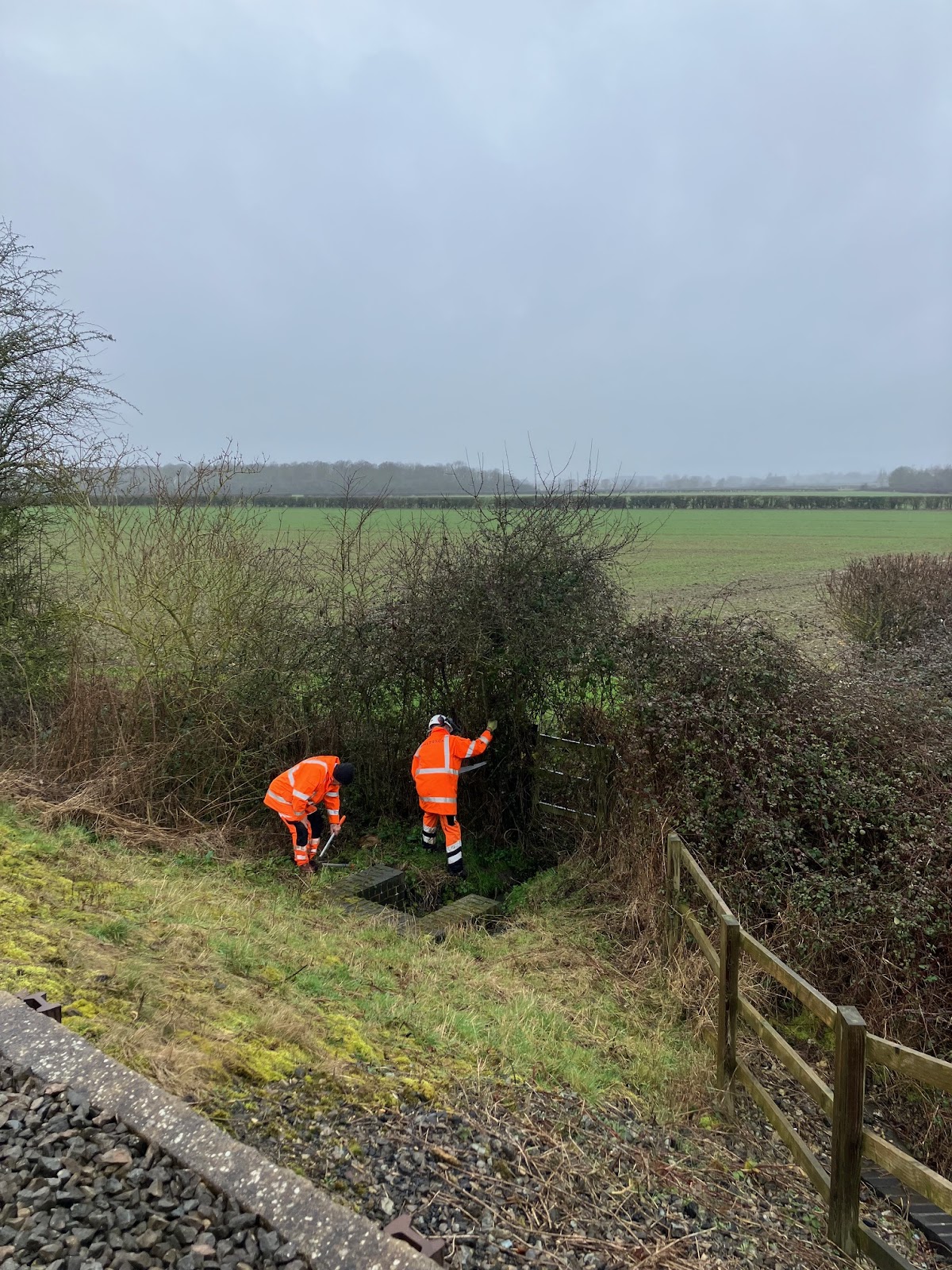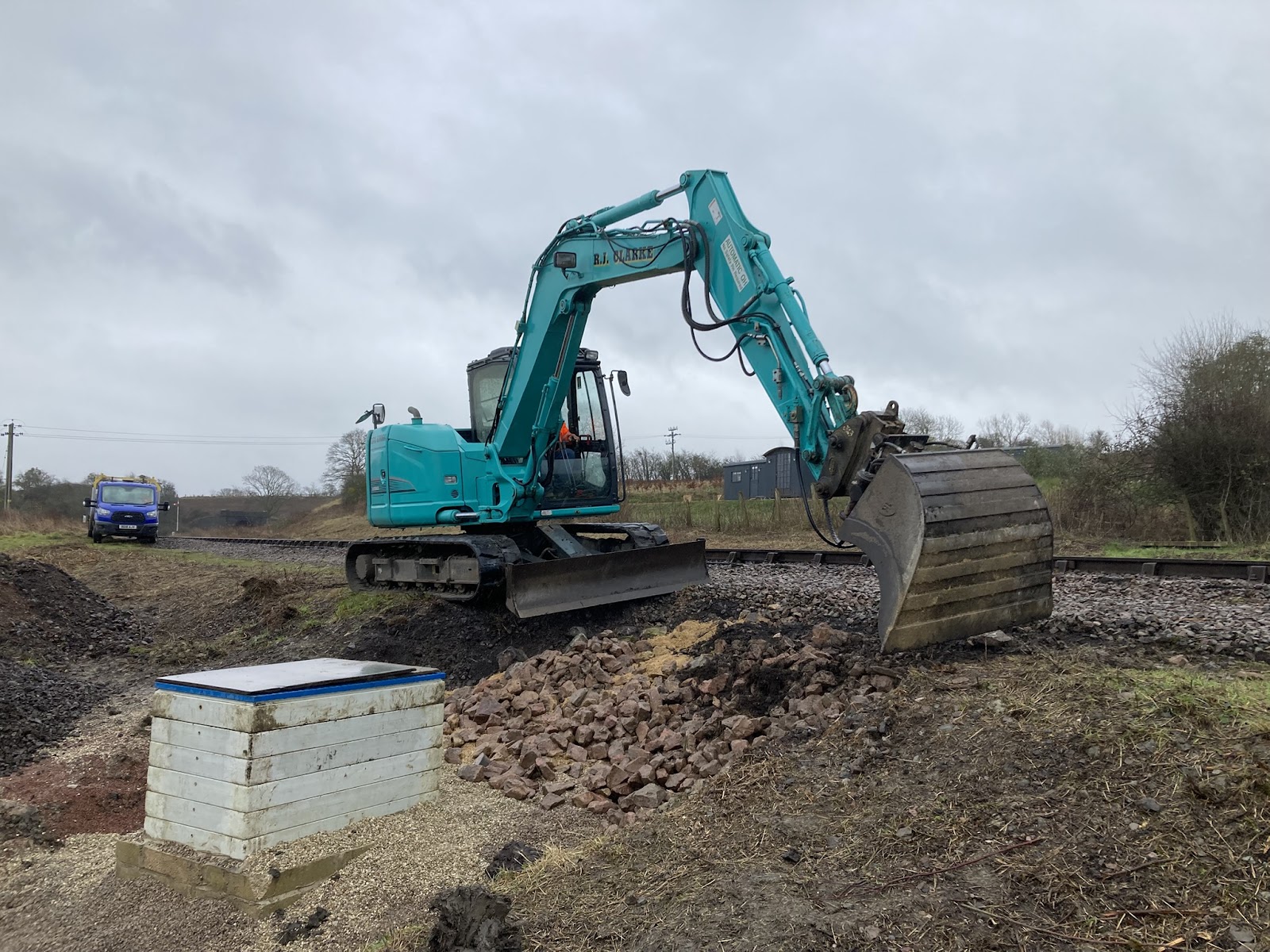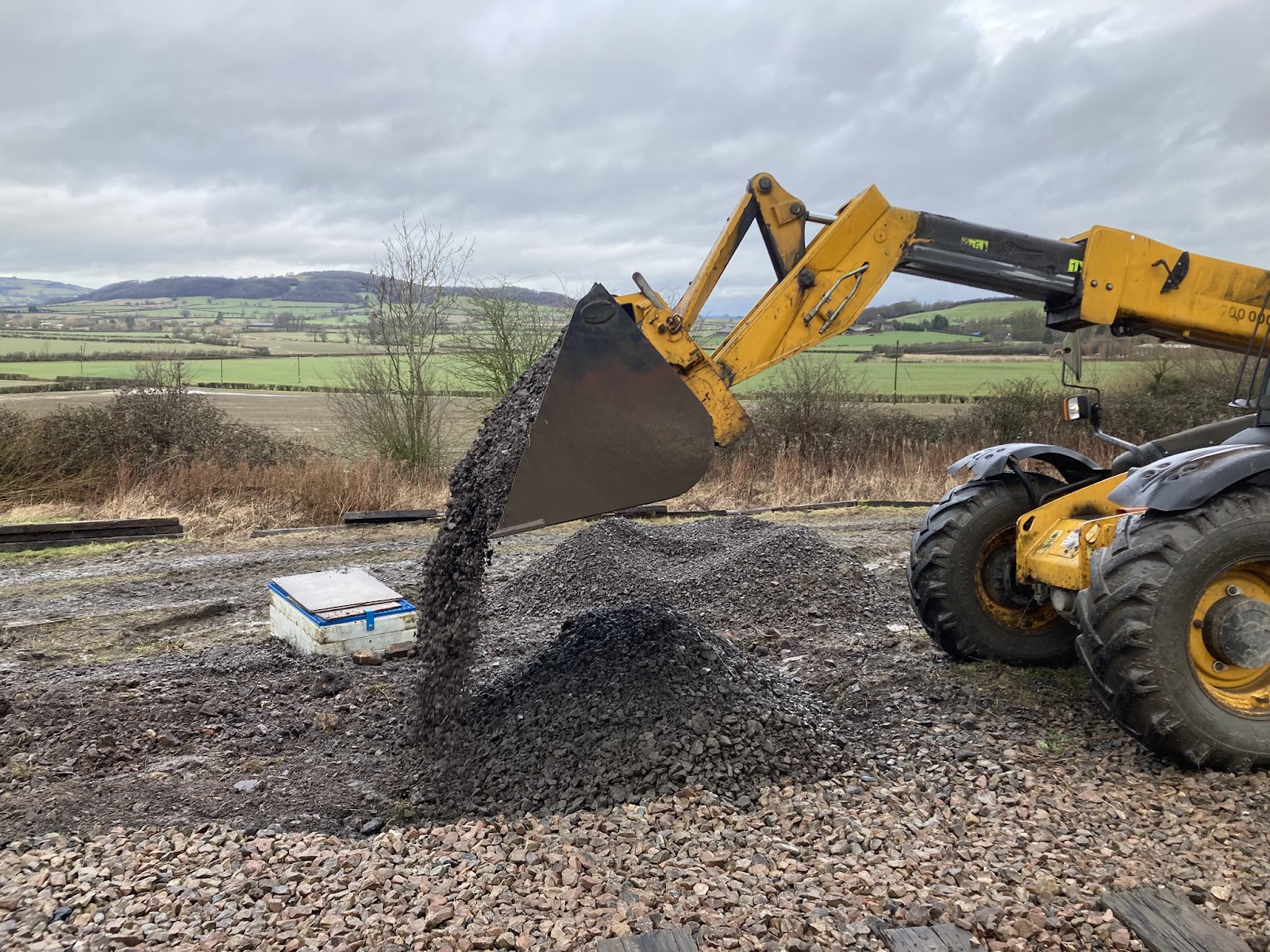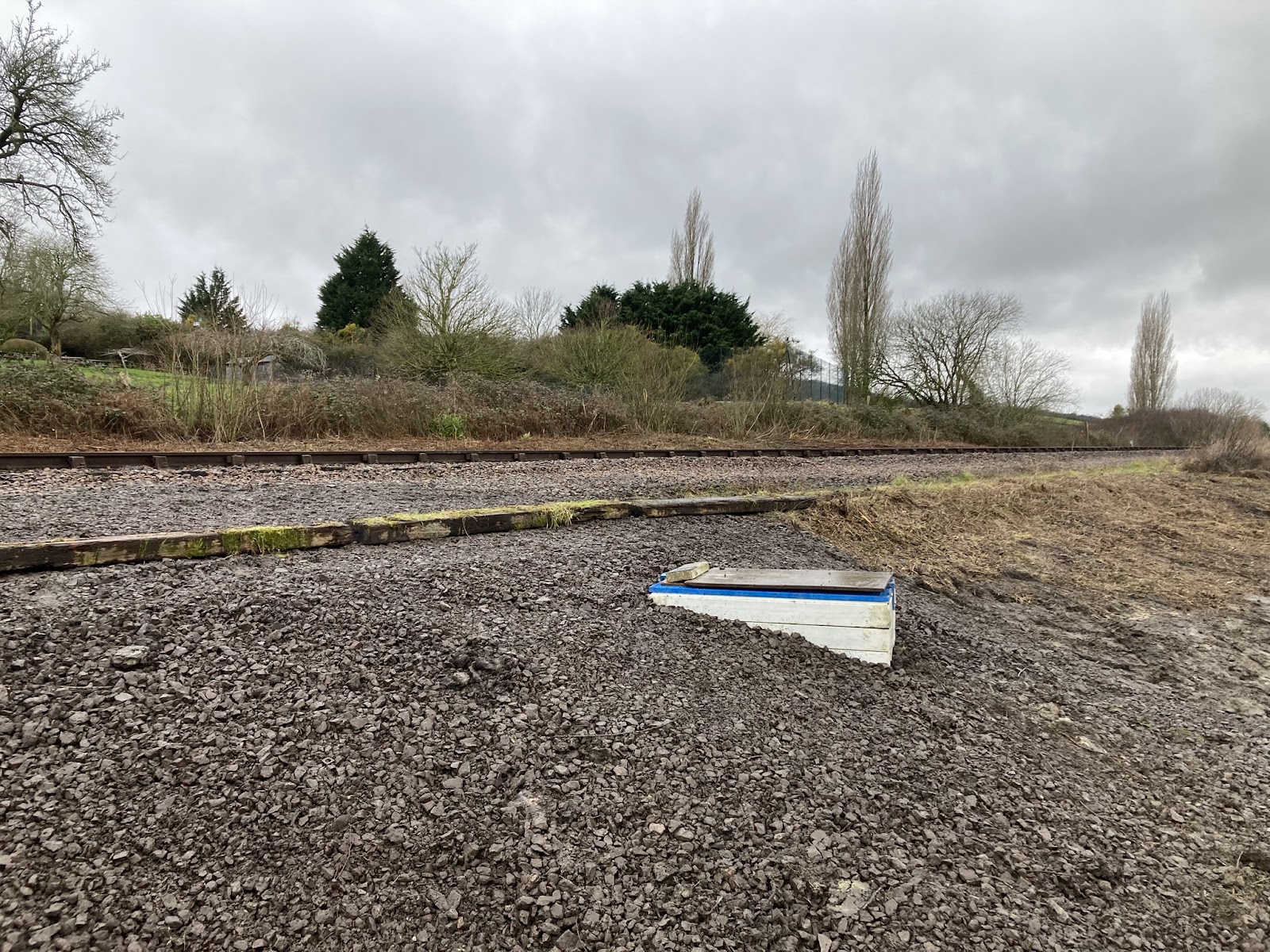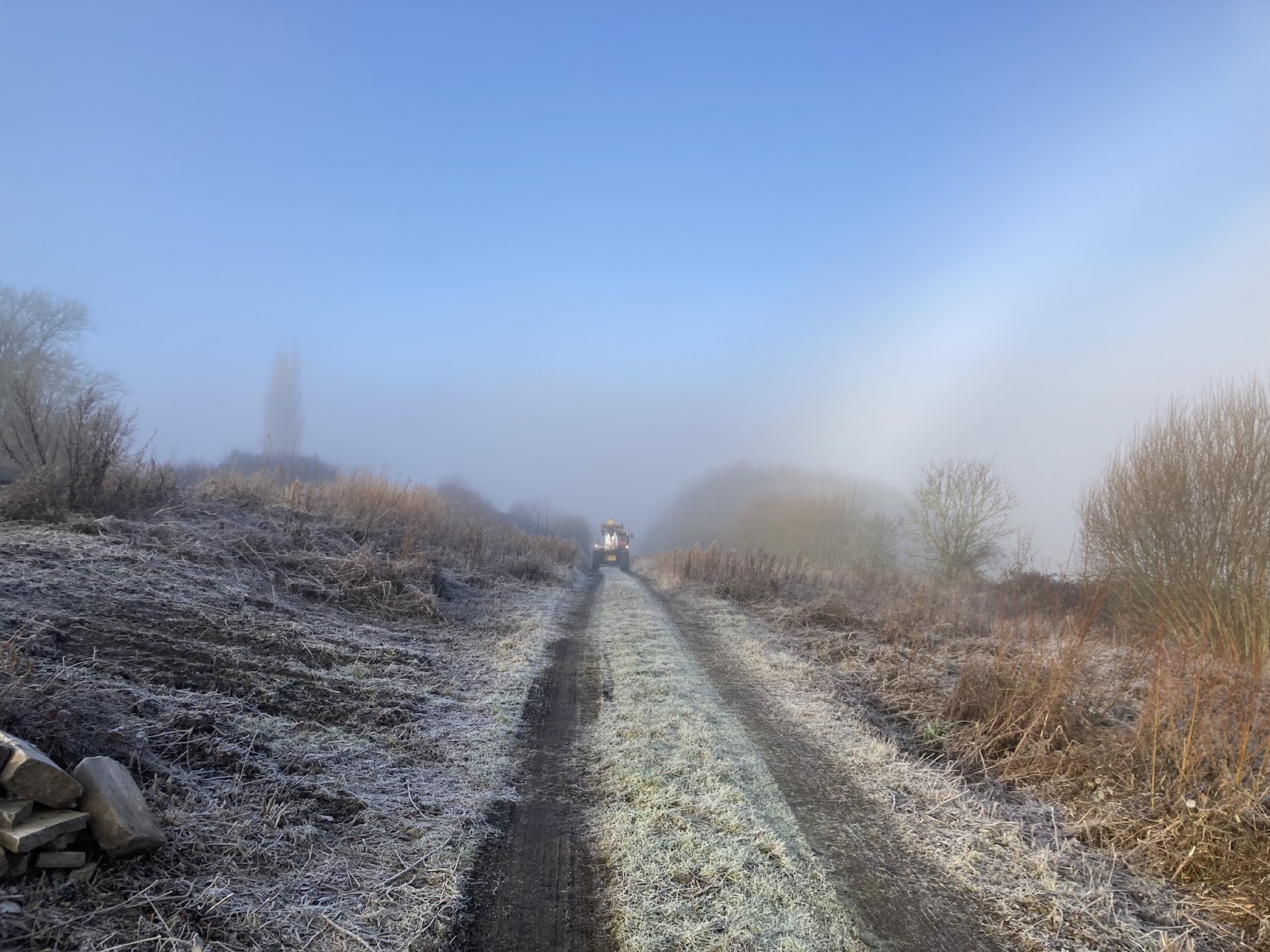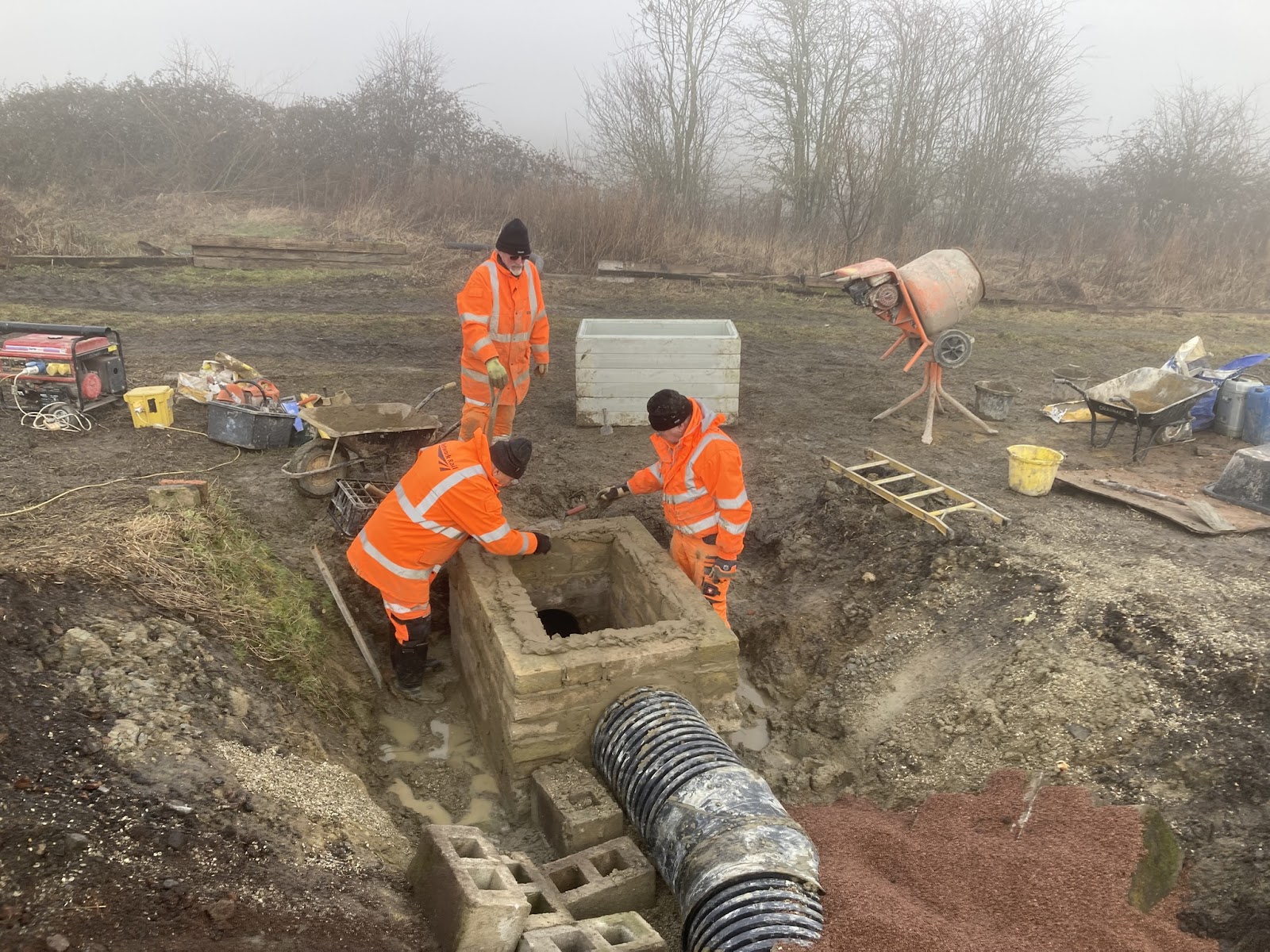Not the GWR milk/parcels/newspaper
carrying items of non-passenger coaching stock. (There is one of
those on the railway, Siphon G 2983, details on this page of the
Vintage Carriages Trust website –
http://www.ws.rhrp.org.uk/ws/WagonInfo.asp?Ref=168).
No, we are talking of syphons, the wide variety of devices that
involve the flow of liquids through tubes. In a narrower sense, the
word refers particularly to a tube in an inverted "U"
shape, which causes a liquid to flow upward, above the surface of a
reservoir, with no pump, but powered by the fall of the liquid as it
flows down the tube under the pull of gravity, then discharging at a
level lower than the surface of the reservoir from which it came. We
use the spelling with a Y, the alternative spelling with an I reveals
its derivation from Ancient Greek σίφων (síphōn) meaning
'pipe’ or ‘tube'. We have 5 syphons which run underneath the
railway track; four are small(ish) diameter so we classify these as cross
drains, one is larger so is a culvert. Two of our syphons are at
Bishops Cleeve, either side of Two Hedges Road; both were subject to
alterations around 30 years ago as part of the reopening back to
Cheltenham Racecourse. Hence high time to attend to the effects of
time and weather since then.
Thursday 27th February
Nine of the team attending on our last
working day of the (metrological) Winter. Six of the team went syphon
investigating at Bishops Cleeve, the other three attending to Working
Lane haul road.
First was a delivery of spent ballast
to Bryan at Gotherington station to use for driveway repairs.
Jonathan loaded this with the telehandler at Winchcombe onto the
tipper Transit; then Dave and Peter delivered it to Gotherington.
 |
| Spent ballast delivered to Gotherington Station. [Photo by Dave] |
The
three of them then proceeded to the bottom of the haul road at
Working Lane. Jonathan used the telehandler to clear a path through
the pile of debris to enable some of the water that is collecting
there to drain away into the boundary ditch.
 |
| Clearing a drainage channel through the debris at the bottom of the haul road. [Photo by Dave] |
Meanwhile Dave and Peter
loaded some good reclaimed red bricks for transport back to
Winchcombe. These had been the only materials moved to Working Lane
when the intention was to use that area for storing drainage items.
The stack of bricks were surrounded by old pallets, which had become
a ‘bug hotel’. So these were taken up to the top of the haul road
to construct a new ‘bug hotel’ by the boundary hedge near to the
stack of cut logs. Together these will provide spaces for insects and
small mammals.
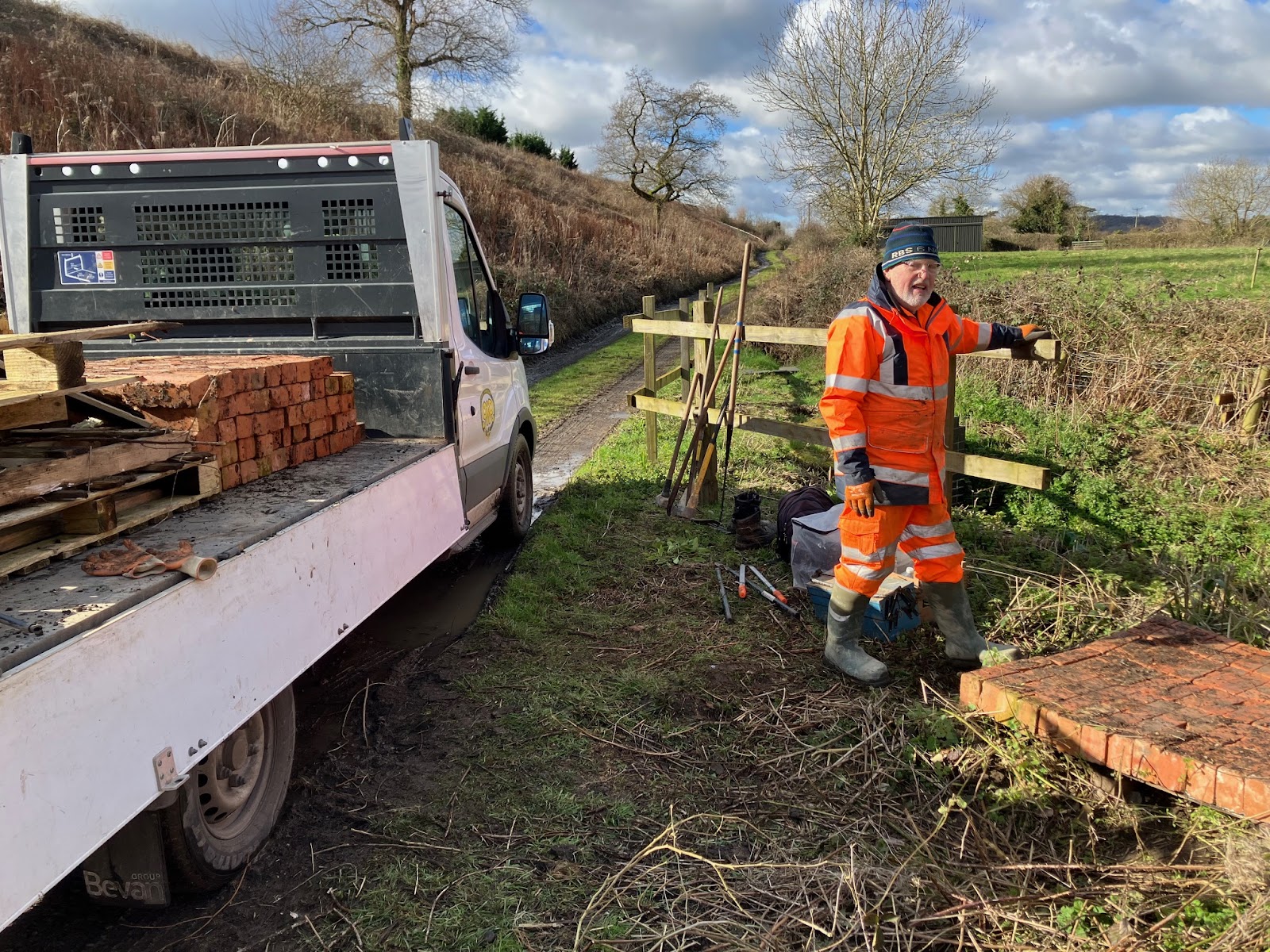 |
| Peter loads the recovered red bricks. [Photo by Dave] |
 |
| The new 'bug hotel' under construction at the top of the haul road. [Photo by Dave] |
Finally at Working Lane, Dave and Peter cleared out
the grill on the down stream exit of culvert 24C under the railway
boundary; they also checked the up side entry as there was more than
the usual amount of debris in the channel.
Roger, Nigel, Polly, Ian, Martin and
Andrew were the six headed for Bishops Cleeve. First task was at
syphon cross drain 39B. The down (Cotswold) side inlet, originally an
L shaped headwall, had in the past been extended into a chamber
covered with concrete sleepers. Some of the chamber sides are now
displaced, so will need rebuilding. Roger, Ian, Martin and Andrew
drew up the plan for this; it will include fitting a proper blue mesh
lid to replace the concrete sleepers. Meanwhile Nigel and Polly
renewed the mortar flaunching around the metal manhole lid which
takes the inlet from the run off on footbridge 39Z. (The footbridge
is on the low mileage side of the main Two Hedges Road bridge which
is number 40, hence the 39 number).
 |
| Ian (left) and Roger remove the concrete sleepers to reveal the syphon inlet chamber of 39B. |
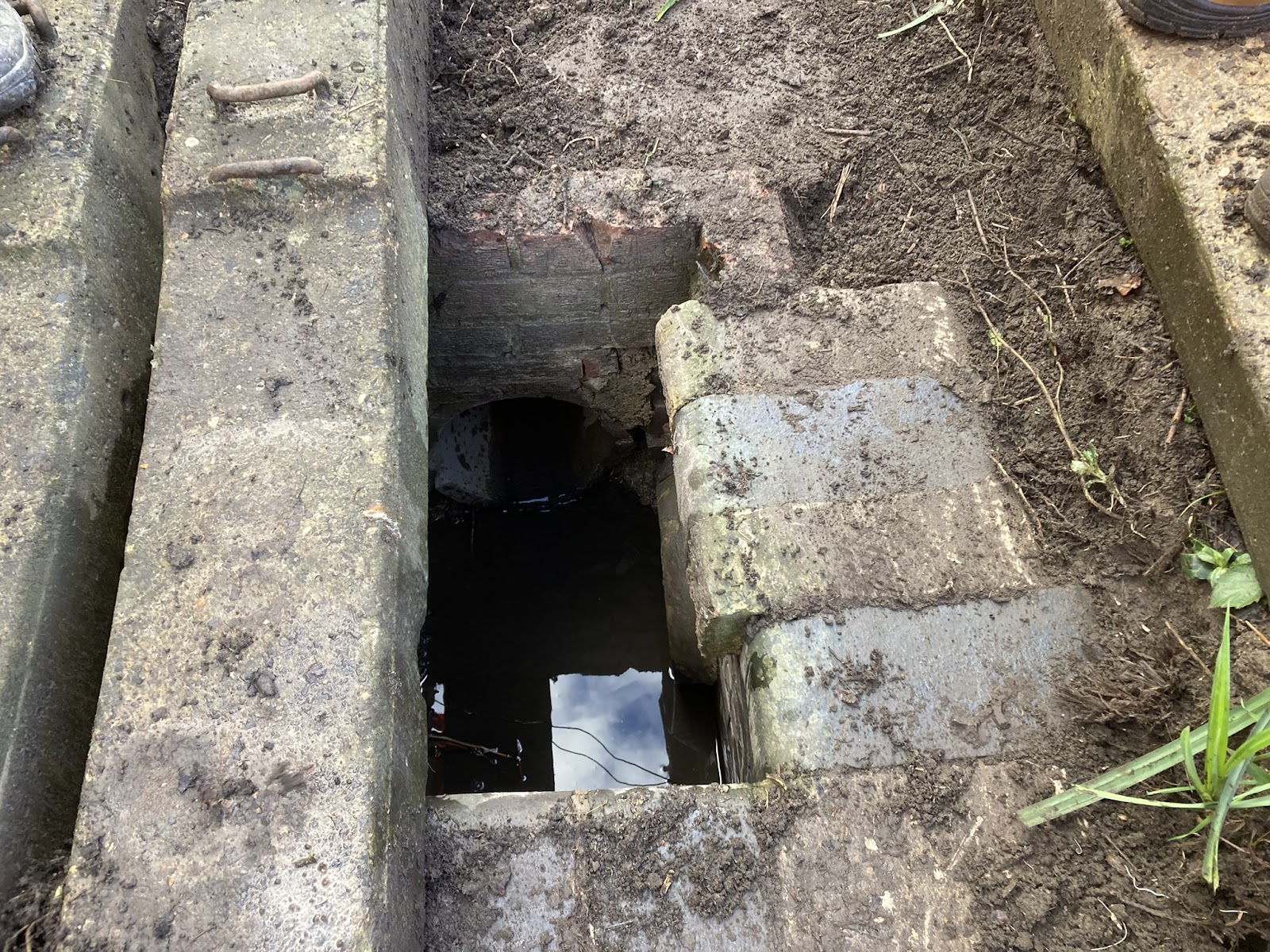 |
| Three displaced coping bricks on the original headwall of 39B inlet. |
 |
| Polly completes the new flaunching around the metal manhole of 39B road run off inlet. |
Then over to the up (Malvern) side.
Here the original syphon exit is in a pit partly under a gate in the
security fence. At some time in the past, probably when the houses on
Jesson Road and Two Hedges Road were built, the outlet had been
extended in concrete pipes to outside railway land. Excavating this
pit revealed a gap in the first join of the concrete pipes; we
quickly sealed this with some more mortar. Again we established the
rebuild plans, this time we will use concrete lids because of the
clearance needed under the fence.
 |
| Currently the cover of the 39B exit pit is this old section of security fence. Loose section of brick just visible underneath. |
On the high mileage side of Two Hedges
Bridge is syphon cross drain 40A. Here the up side outlet is way outside of railway land on the other side of Pargets Road. (The water course eventually ends up in the Dean Brook.) There is a metal centre
washout lid in the up side cess – here we will construct a small
wall around it to prevent vegetation encroachment and thus keeping it
visible to clearance teams. On the down side, the actual syphon inlet
is now buried. More concrete sleepers cover part of a U shaped brick
invert which leads to this. The big puzzle is a circular depression
in the invert. After prodding this with a crowbar and a long handled
spade, we think this is just a slit trap. As the flow through the
syphon appears to be good with no leakage into the cess drains; and
the U shaped invert is in reasonable condition, the only item for our
‘to do’ list here is fitting a better lid to replace the concrete
sleepers. But that is certainly nowhere near the top of the priority
list.
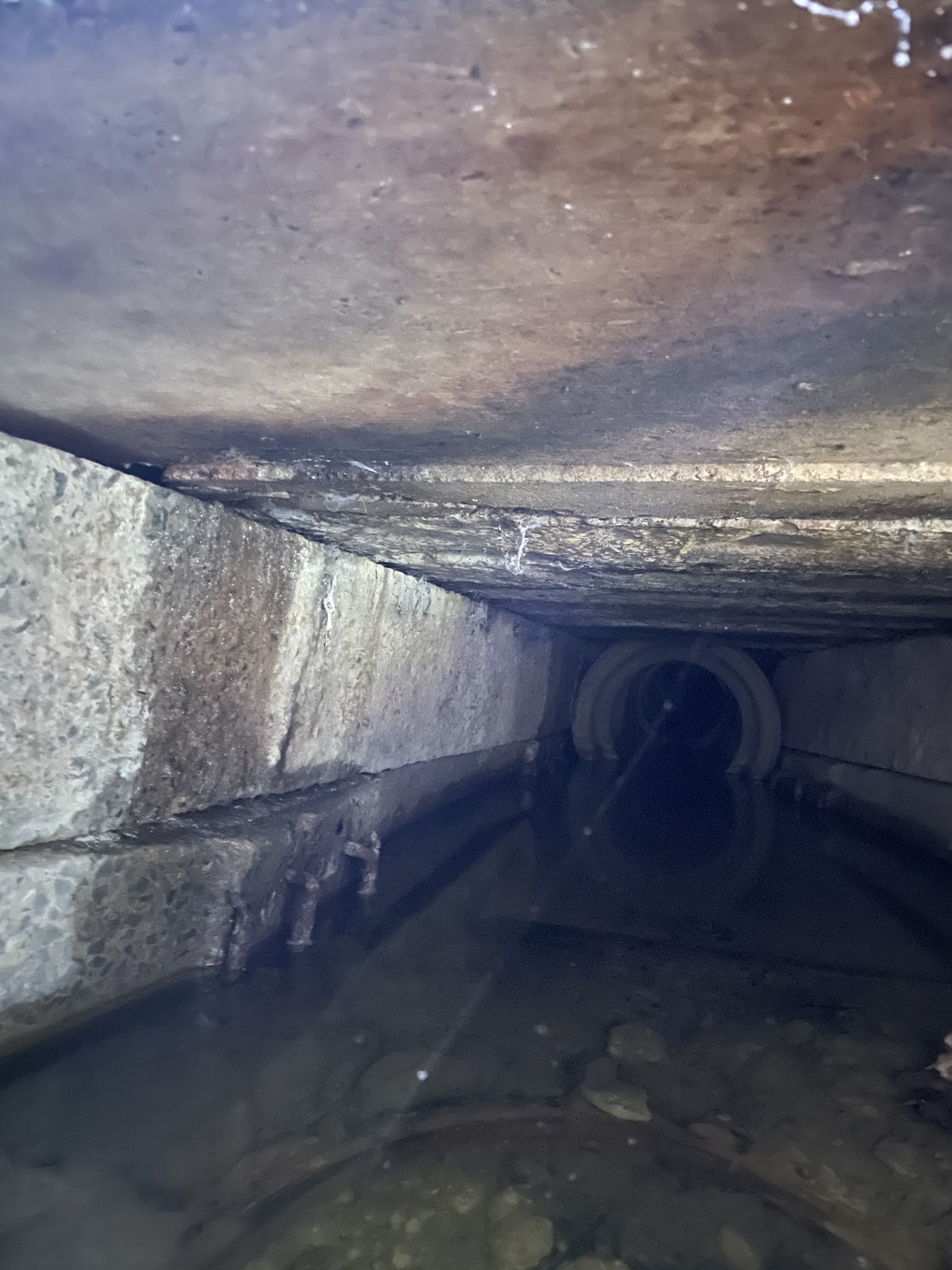 |
| Looking towards the inlet of 40A underneath the track at the top of the cutting. Part of the circular silt trap visible in foreground. [Photo by Ian] |
 |
| Close up of the circular silt trap in the base of 40A inlet. |
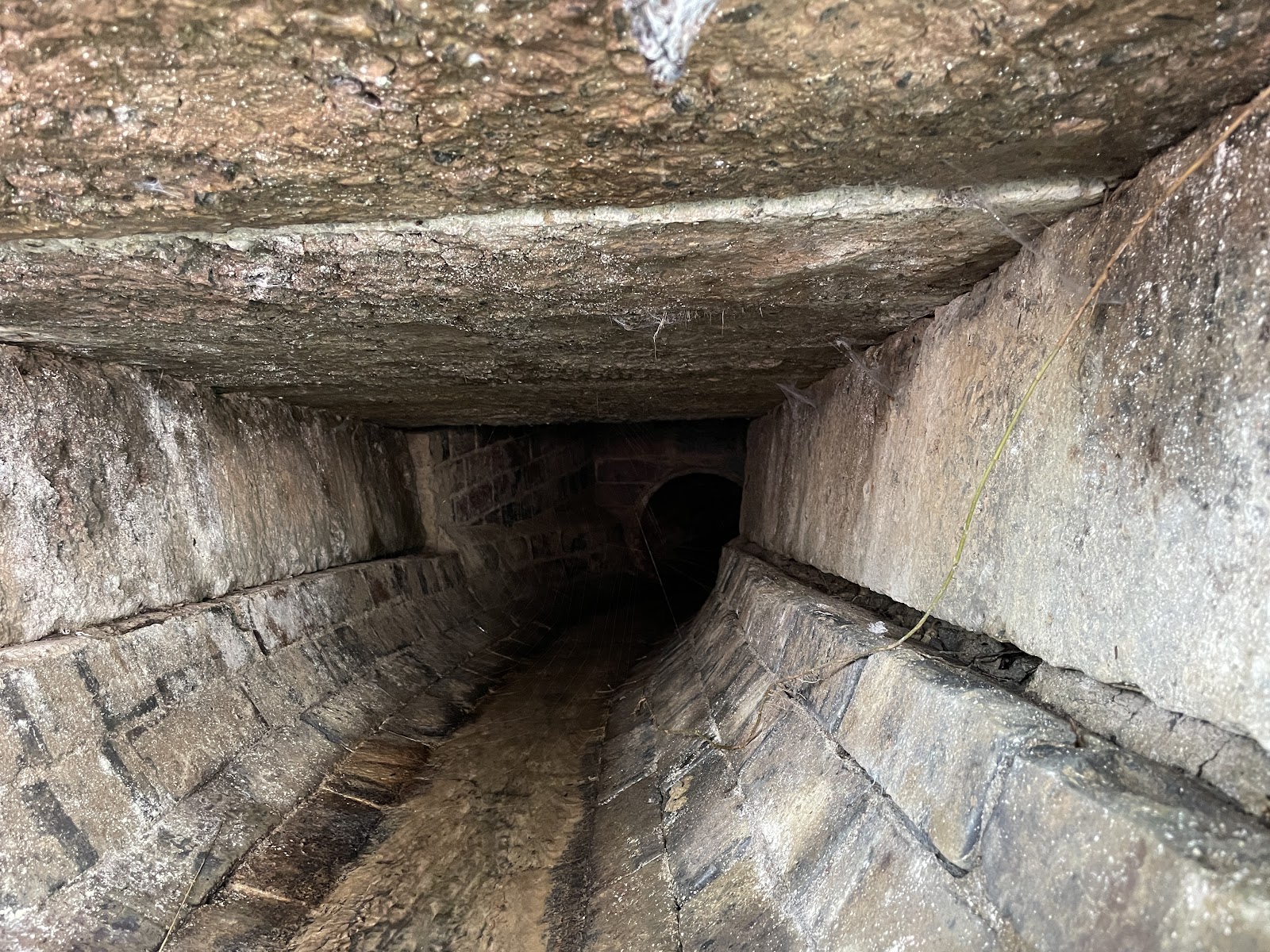 |
| Looking down the U shaped invert of 40A towards the syphon entry. [Photo by Ian] |
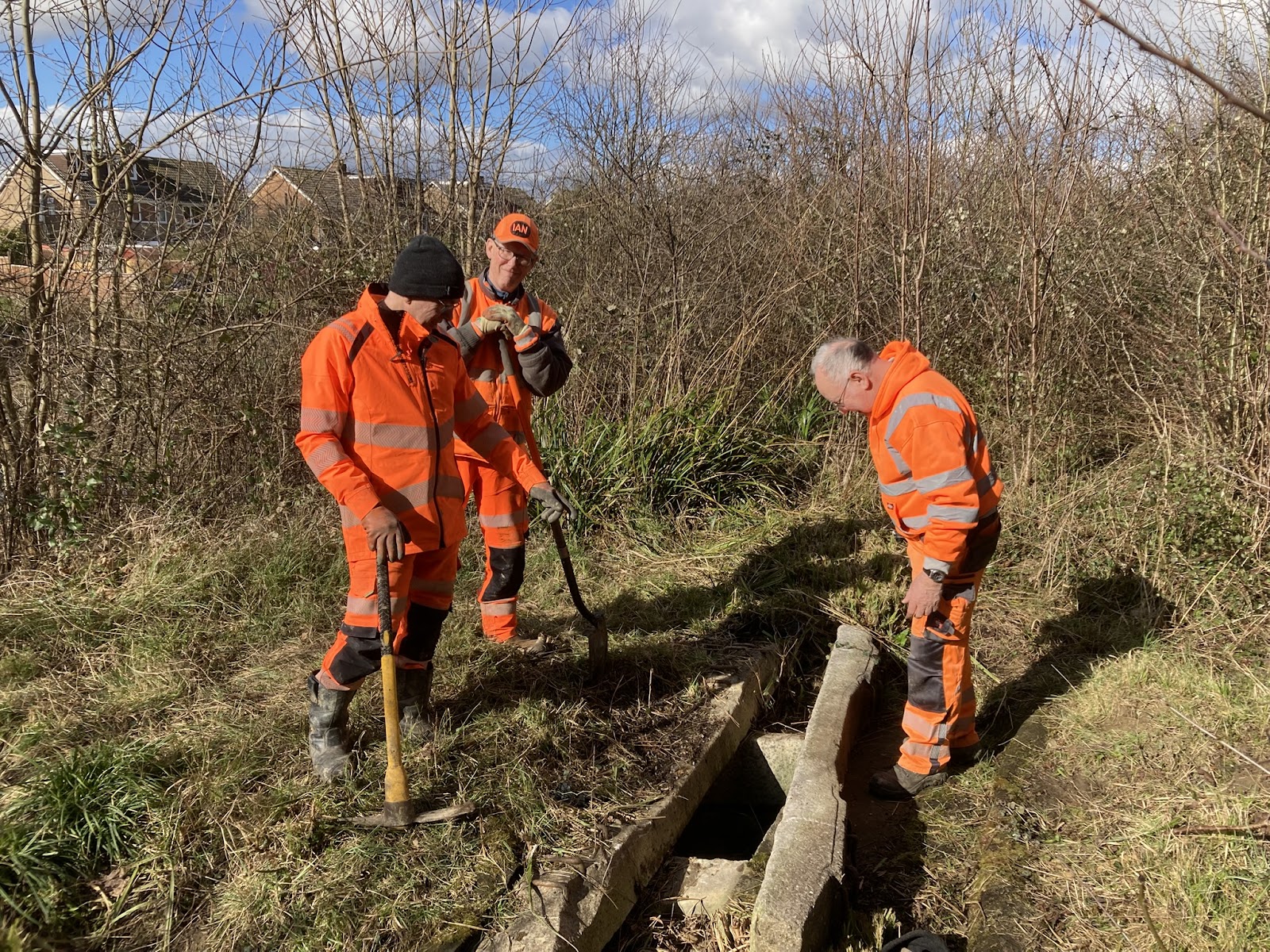 |
| Martin, Ian and Roger take a breather before replacing the last of the concrete sleepers on the 40A inlet. |
The next drainage channel south is
definitely on our priority list! Just before milepost 17½, a stream
which originates on Cleeve Hill and gathers spring water on its way
down, enters under the down side boundary at the top of the cutting.
There is intermediately a 90 degree bend; the water then heading
south. Over topping of the crest ditch here has been a long running
problem. A few years ago, the team aided by one of our contractors added a French drain with two
perforated twinwall pipes in it to take any excess water down to a new chamber in the
down side cess. The 90 degree bend was improved with a circular manhole and part of
the crest ditch was piped. (See here.) Unfortunately our contractors did not
complete the piping of the crest ditch as they were redeployed to a more critical repair.
 |
| The down side cess chamber which gets the overflow from the Cleeve Hill stream. Water dribbling out of the two twinwall pipes and oozing from the cutting side through the concrete ring slots. |
 |
| Checking the flow in the 90 degree bend manhole. |
We rodded the two perforated twinwall
pipes from the down side cess chamber – this proved that they are
not blocked with silt and showed where they start in the crest ditch.
We also removed silt and other debris from around the cess chamber
and the lower part of the French drain. We also examined the circular
manhole , this confirmed that all of the water entering does indeed
make the 90 degree turn to exit into the crest pipe. It looks like it
is the first join in the crest pipe that is leaking. So next task is
to dig out around that.
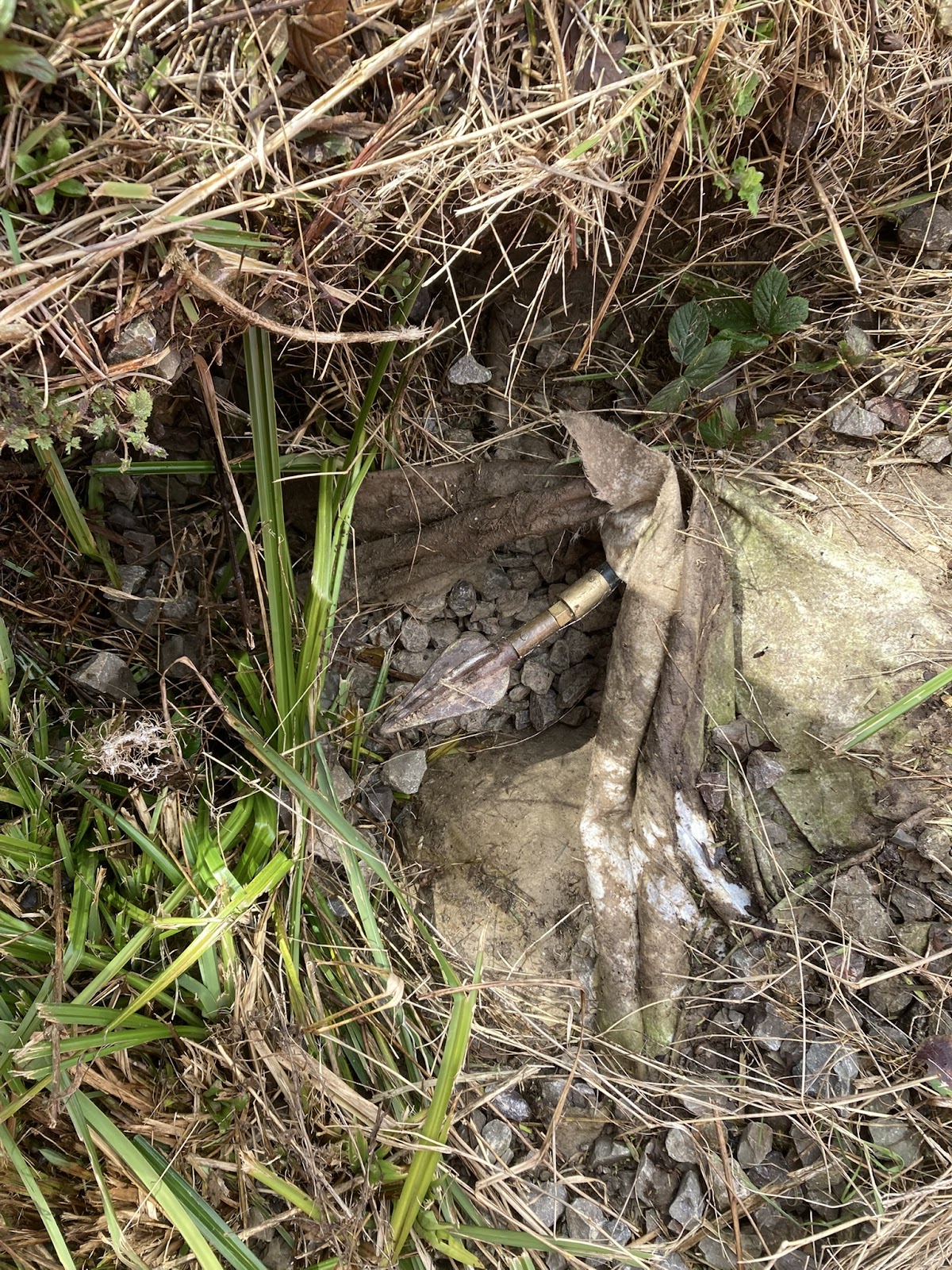 |
| The pointed end of the drain rods emerges from one of the twinwall pipes into the crest ditch. |
 |
A lot neater with the silt and debris removed from the bottom of the French drain and the down side cess chamber.
|
All this water does eventually reach
cross drain 40B. Nigel and Polly knocked off a couple of minor repair
jobs for that, some repointing around the barrel on the outlet of the
main structure and to the rear of the small headwall where the down
side cess drain enters the toe ditch.
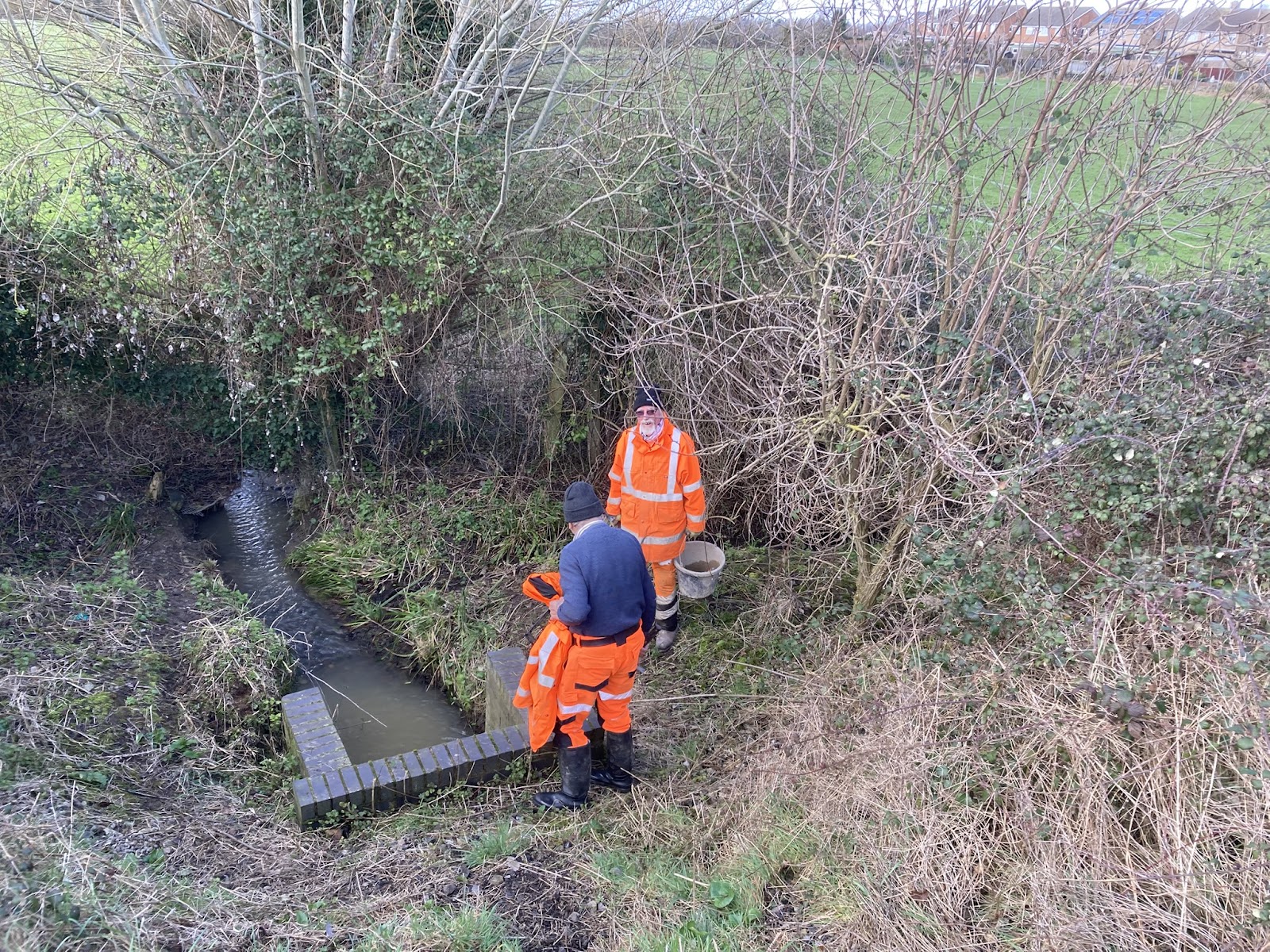 |
| Brickwork repair team, Polly (l) and Nigel, at 40B up side exit. |
As ever when working at Bishops
Cleeve, we cleared up quite an assortment of items that our
neighbours have donated. Amongst the haul was almost a dozen assorted
balls of various sizes; a twelve foot scaffold pole (which will be
useful for safety rail construction) and a concrete bird bath.
Back at Winchcombe, we stacked the
recovered bricks from Working Lane on a decent pallet. Finally our
last task was to move our stock of milepost heads and materials for
numerals from the old wooden workshop to the block built shed. The
old wooden workshop and office are due to be demolished in April.
Wildlife report: Not a great
deal of note to report. A friendly black cat paid a brief visit to us
at Bishops Cleeve, a flock of finches was noted a bit further south,
with gulls, wood pigeons, crows and blackbirds circling overhead.
Spring’s imminent arrival was apparent with some new growth
appearing on blackberry brambles; still plenty of snowdrops but all
now past their best. Most daffodils we noted are still in bud, a
noticeable exception being those in front of the entrance to
Churchward House which are already in full bloom.

















